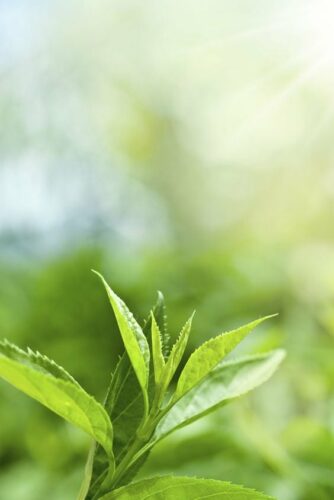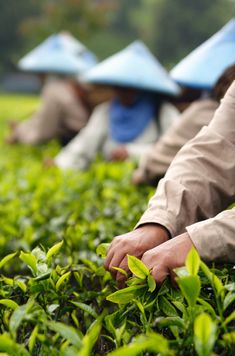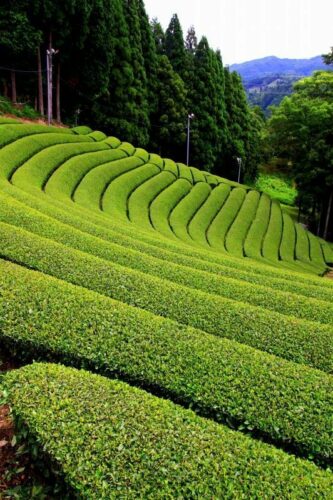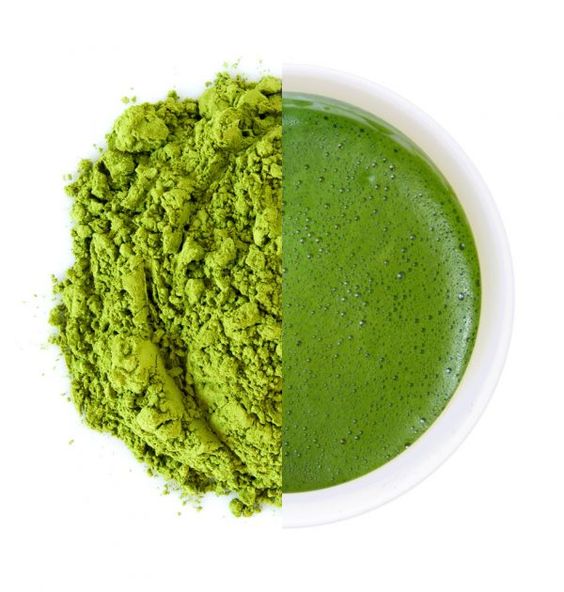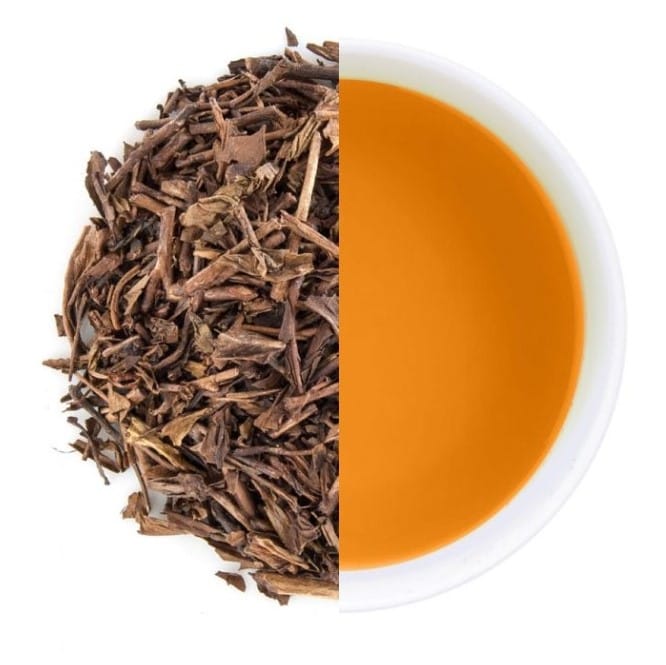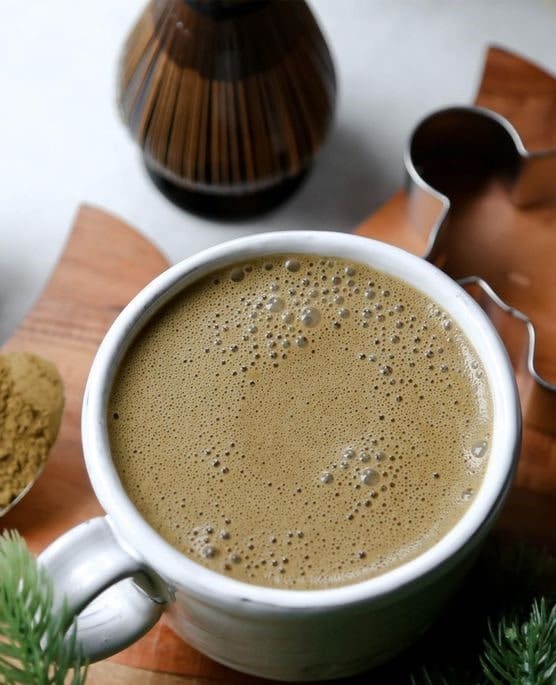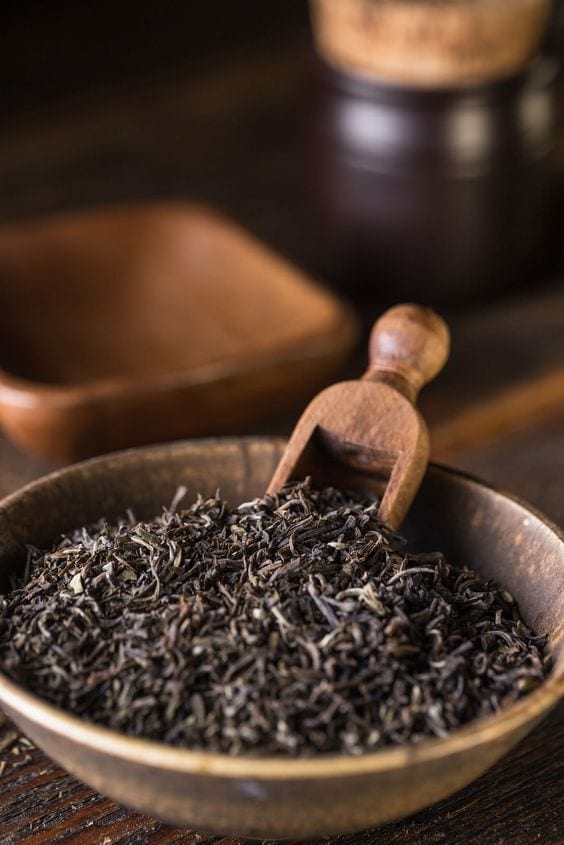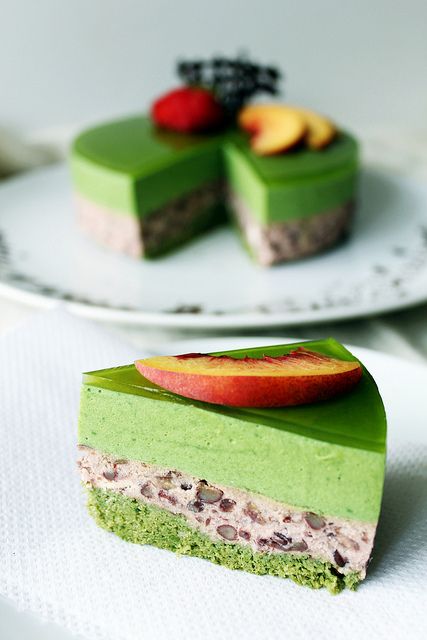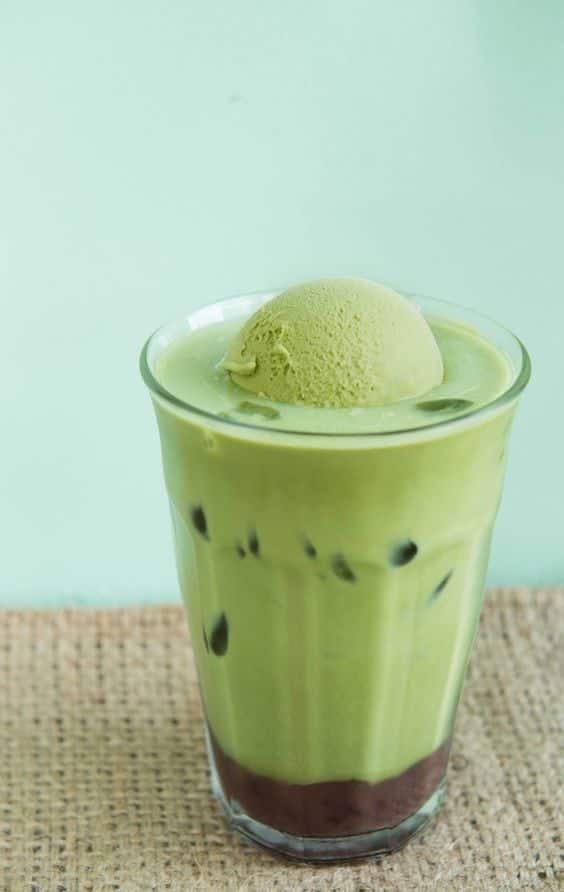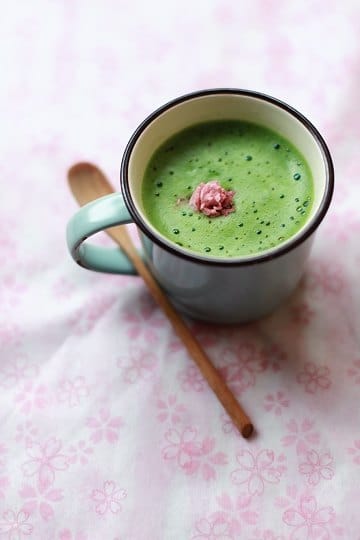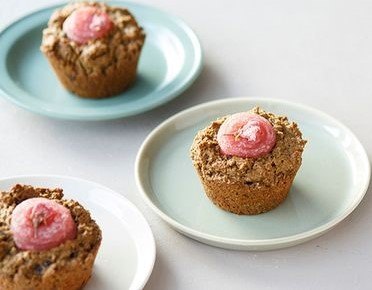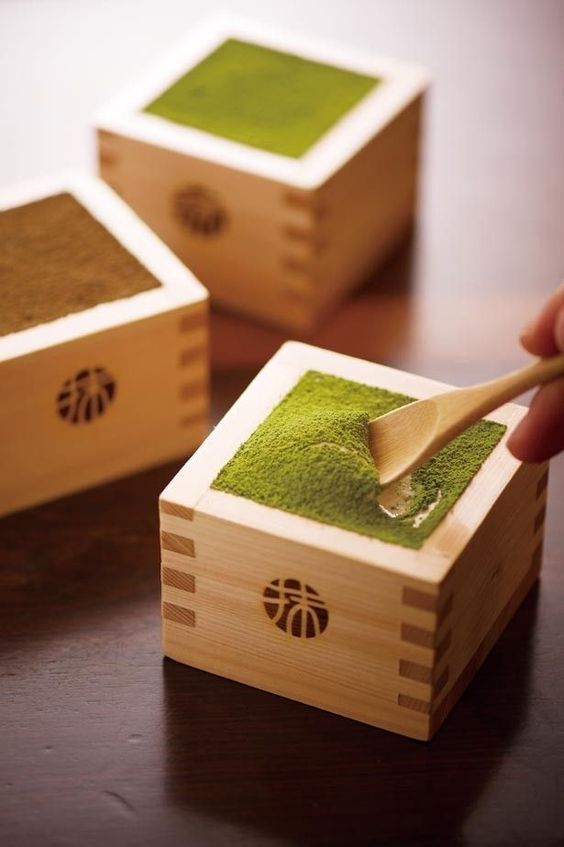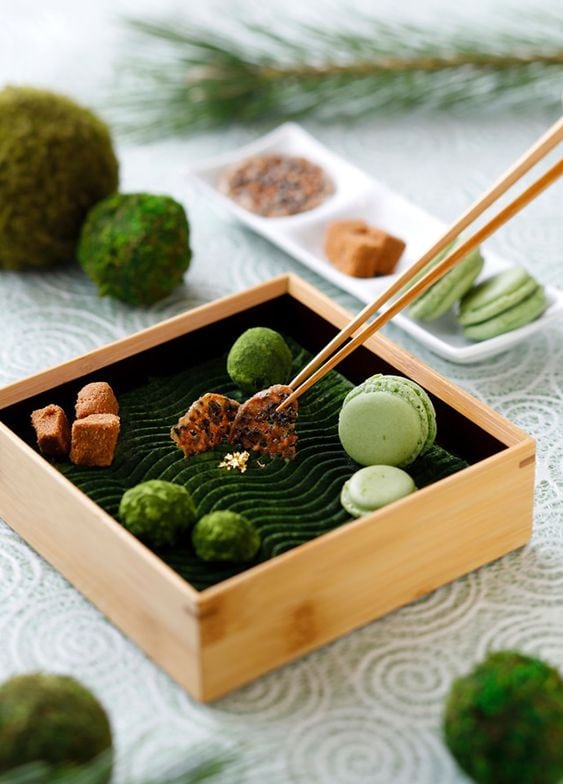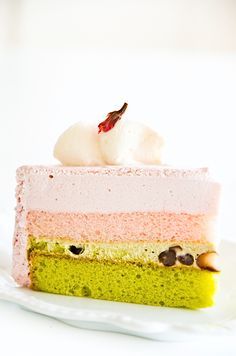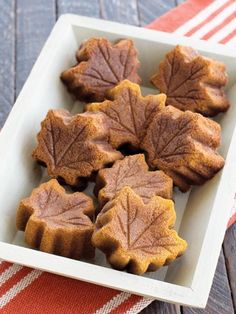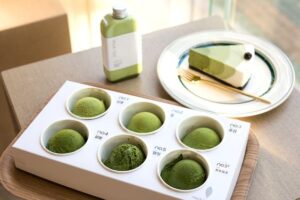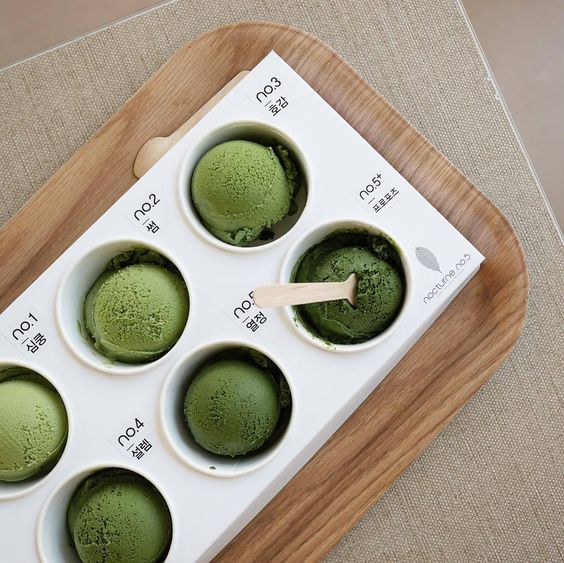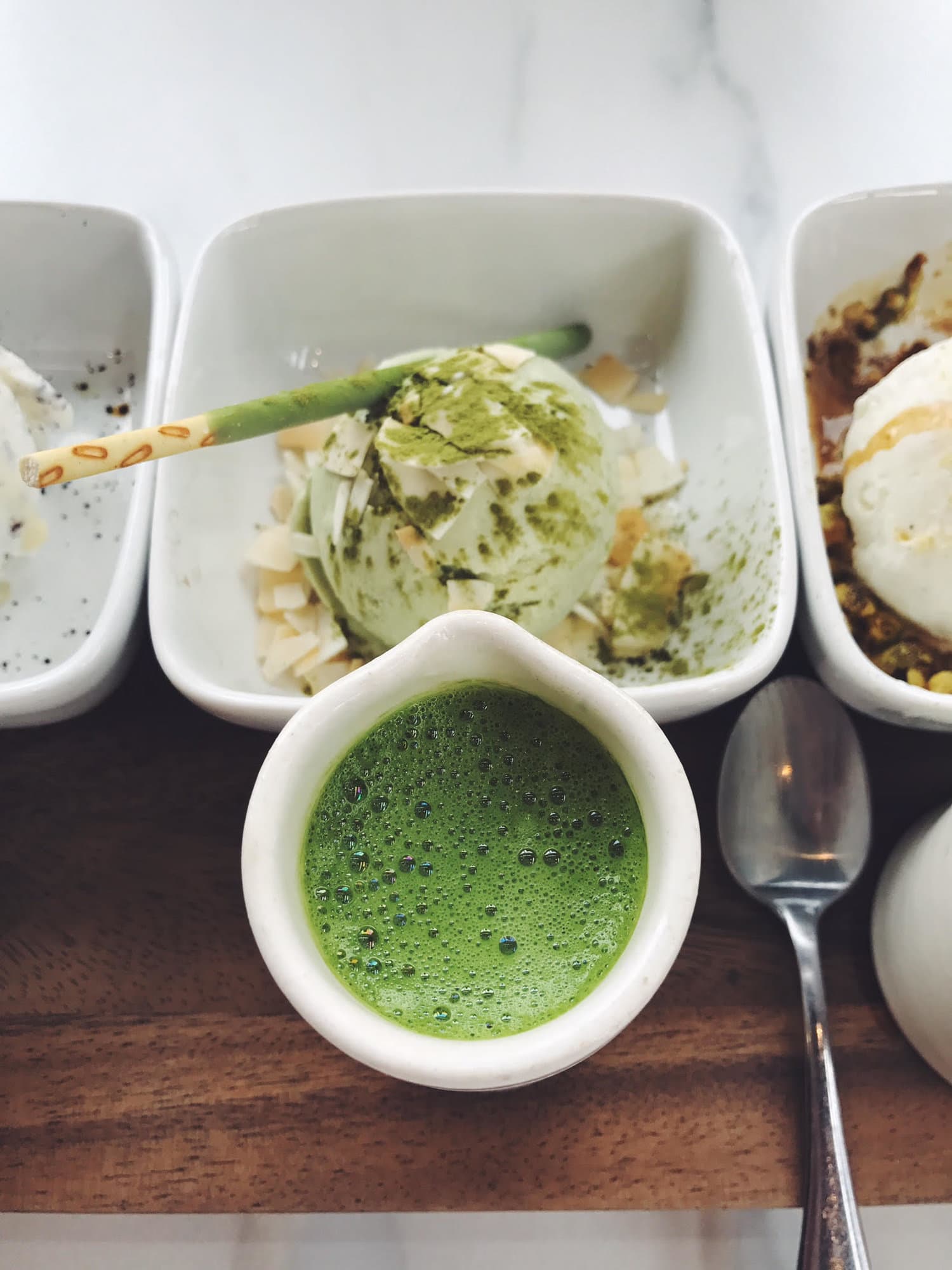Green tea has become another popular menu for Thai people, especially among those who love Japanese culture. Many shops use green tea powder to make a drink or use it as an ingredient in Western-style desserts such as cakes, pies, tarts, or bread.
But the real foundation of drinking hot green tea is often served with wagashi, small, bite-sized sweets that are intricately decorated in the tea ceremony, which is a traditional Japanese tradition. So wagashi is another idea that cafe owners or people who want to have their own shop can pick up the idea and develop further because it is a sweet that is not yet widespread in Thailand. But anyone who goes to Japan must try it every time. So it is a very interesting idea for cafe owners or those interested in opening a cafe to create a unique identity for the menu in the shop.
Source: http://masoupedujour.tumblr.com/post/3928153619/clover-by-green-piglet
Talking about Wagashi (和菓子/ Wagashi) or Japanese sweets, many people may not be able to imagine what it is??
Wagashi were originally dry sweets made with sugar. At that time, sugar was very rare and was limited to the upper class and selected confectioners. Seasonal sweets began to be invented and used in the tea ceremony during this era.
Dried wagashi, also known as higashi
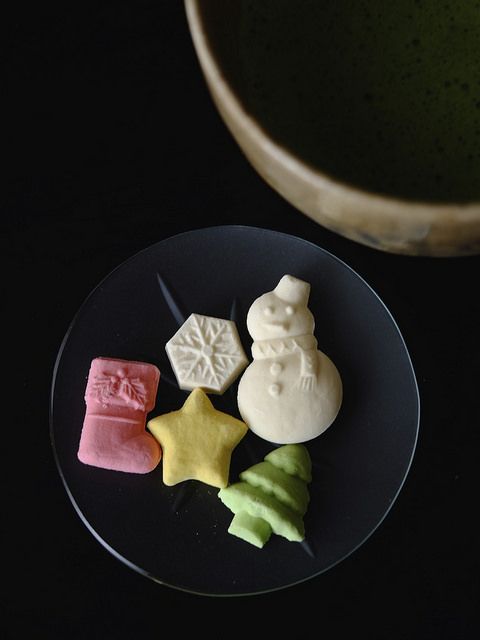
Source: https://www.flickr.com/photos/lotus-aki/15441310123/
Later, it was modified to use beans, sugar, rice flour, and other types of flour as the main ingredients, and its appearance and taste changed according to the season. For example, in winter, there is a steamed wagashi that is eaten warm, similar to a steamed bun, made from flour mixed with sugar, stuffed with sweet red beans, called manju. There is also a hot red bean dessert that is popularly eaten during the cold weather.
Manju dessert
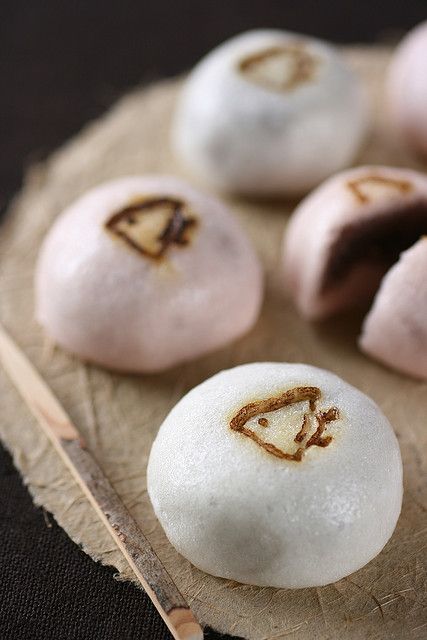
Source: http://www.flickr.com/photos/bananagranola/2553212708/in/set-72157602396958026
In summer, sweets are often served cold, such as jelly or sweets made from flour, sugar and red beans.
Yo-kang jelly, often served during the summer.
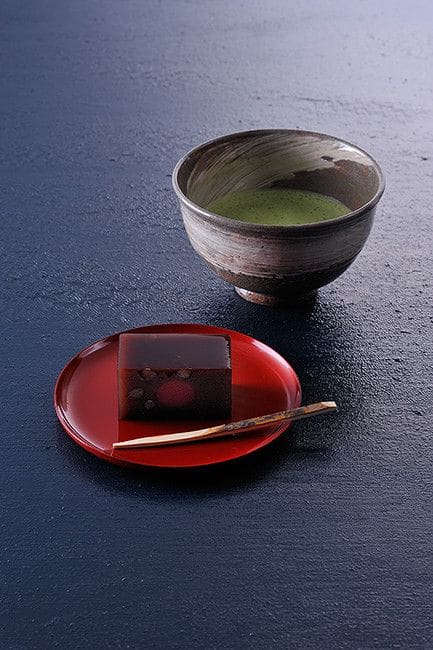
Source : http://500px.com/photo/32742361
Another special and exciting thing about wagashi that is different from other bakeries is the patterns of sweets that are created from nature, such as trees and flowers, according to the changes of the seasons. For example, in autumn, sweets are made into the shape of maple leaves, in summer, they are made into the shape of fans or sunflowers, etc.
Source: https://mochikowagashishop.wixsite.com/wagashi-mochiko
There are many other types of wagashi, such as Dorayaki, Daifuku, Dango Mochi, Namagashi, Monaka, etc. In addition to serving these sweets with tea at the shop, matcha powder can also be used as an ingredient in making sweets. For example, a shop that already has green tea ice cream on the menu can serve it in the form of Monaka, a wafer filled with red beans and mochi, which will add value to the sweets and make them look more delicious and unique from other shops. Or, try using matcha powder to make Yokan jelly, a Japanese-style jelly, and serve it with large candied red beans, which will make it look even more delicious.

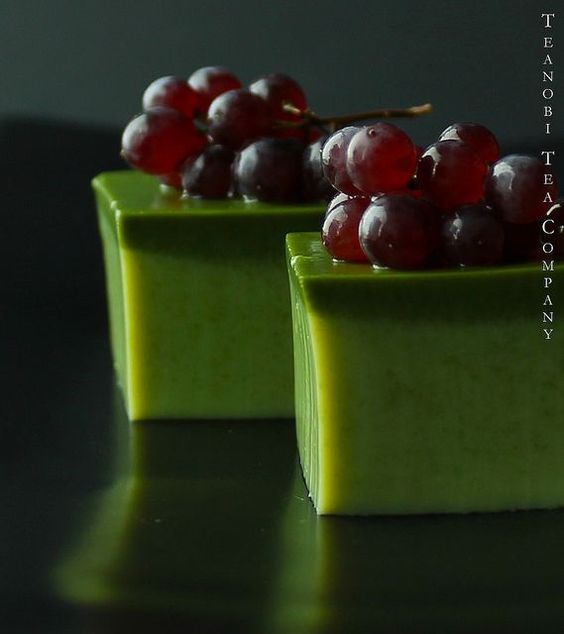
Source: http://www.flickr.com/photos/bananagranola/2070637842/in/set-72157602396958026/
https://www.flickr.com/photos/kiri_no_hana/9663383258/
Article from: Fuwafuwa

